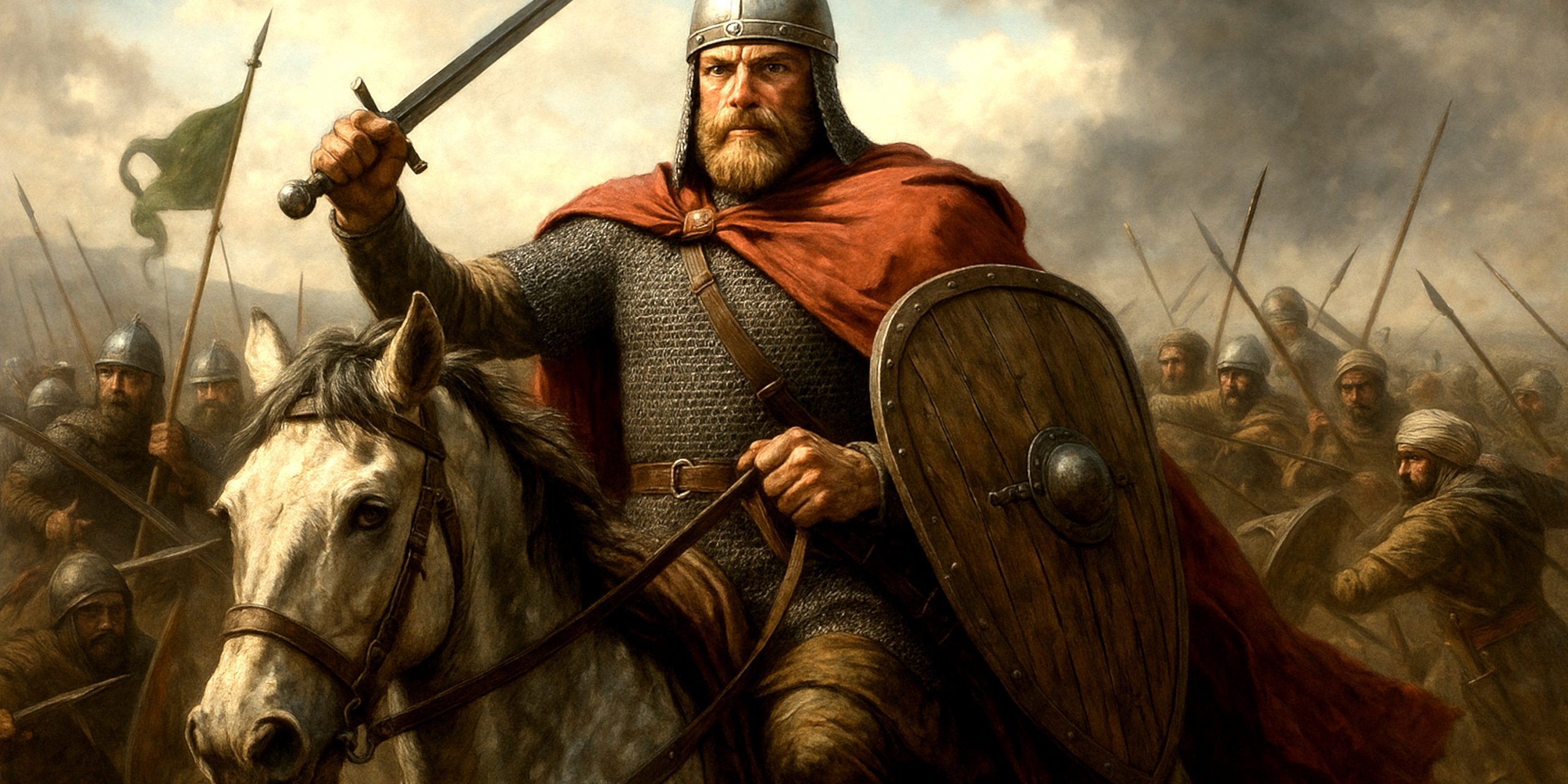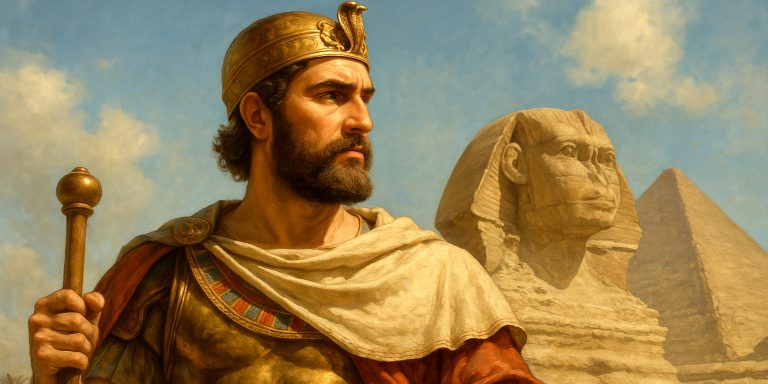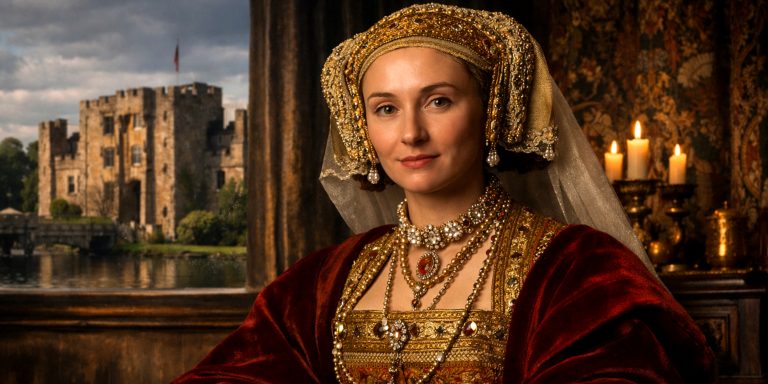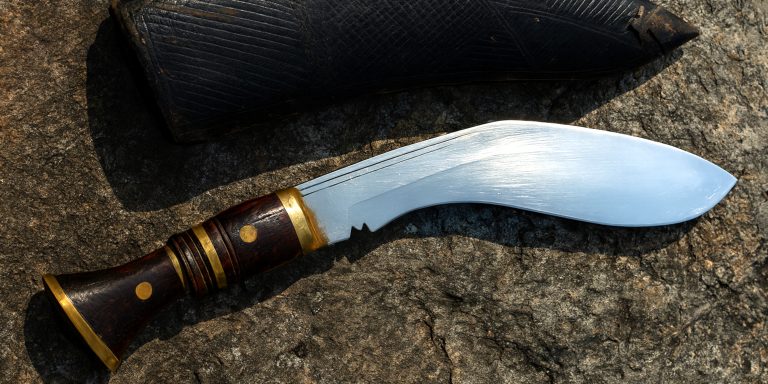
Charles Martel, or “Charles the Hammer,” was a pivotal figure in early medieval Europe. As Mayor of the Palace and de facto ruler of the Frankish realms from 718 until his death in 741, his leadership laid the foundation for the Carolingian Empire. His military successes, particularly against Islamic expansion in Western Europe, secured his legacy as one of the most influential figures of the early Middle Ages.
Early Life and Rise to Power
Charles Martel was born around 688, the illegitimate son of Pepin of Herstal, Mayor of the Palace of Austrasia. After Pepin’s death in 714, a period of turmoil followed. Charles was imprisoned by his stepmother but escaped and eventually secured control over Austrasia after a series of conflicts. By 718, he had consolidated power across the Frankish territories, although he ruled without assuming the title of king.
Military Acumen and Strategy
Charles Martel was a tactical realist, favouring terrain and discipline over reliance on heavy numbers. His most famous victory came at the Battle of Tours (or Poitiers) in 732, where he halted the advance of Umayyad forces into Frankish territory. Though some chroniclers exaggerate the scale of this encounter, its symbolic importance was undeniable. Charles adopted a defensive formation, likely a phalanx-like square, which absorbed and repelled repeated cavalry charges.
He also led campaigns in Aquitaine, Saxony, and Bavaria, often relying on rapid deployment and well-planned logistical support. He understood the need to professionalise the Frankish military, which was largely reliant on levied troops. To achieve this, he granted land to his warriors (precursor to the later feudal system), thereby ensuring long-term loyalty and the resources to sustain mounted warriors.
Key Battles
- Battle of Amblève (716): Charles’ first major engagement. He used feigned retreat tactics to rout the Neustrians and their Frisian allies.
- Battle of Vincy (717): Consolidated his control over Neustria by defeating King Chilperic II and Mayor Ragenfrid.
- Battle of Tours (732): Arguably his most famous. Frankish forces repelled the Umayyad army led by Abdul Rahman Al Ghafiqi. Charles’ infantry held firm against cavalry, reportedly causing heavy losses to the attackers.
- Campaigns in Aquitaine and Provence (735–739): Suppressed rebellion and checked further Muslim incursions via Narbonne.
Arms and Armour
Contemporary records are sparse, but the military equipment of Charles Martel’s forces can be inferred from archaeology and Carolingian sources. As the Frankish army evolved from a tribal levy into a more disciplined fighting force, so too did its equipment.
- Helmet: Likely a spangenhelm type, with nasal protection and reinforced plates riveted to a framework.
- Mail hauberk: Worn by the wealthier warriors and Charles’ core retainers. These would have been knee-length and slit for mobility.
- Weapons:
- Francisca: The distinctive Frankish throwing axe, used early in engagements.
- Spatha: A long sword derived from late Roman cavalry swords.
- Spear: The primary weapon for both infantry and cavalry, useful for thrusting or throwing.
- Shield: Oval or round, made from wood and reinforced with a metal boss.
There is no surviving personal armour or weapon definitively linked to Charles Martel himself, but reconstructed examples from the period offer reliable insight.
Legacy and Impact
Charles Martel was never crowned king, but he exercised royal authority in all but name. He divided the Frankish realm between his sons, Pepin the Short and Carloman. Pepin would eventually depose the last Merovingian monarch, becoming the first Carolingian king, and fathering Charlemagne.
Charles’ military reforms, administrative control, and church alliances paved the way for Carolingian dominance. His donation of lands to ecclesiastical authorities in exchange for loyalty helped intertwine secular and spiritual governance, a hallmark of later medieval Europe.
Where to See Artefacts and Current Archaeological Findings
While no palace or tomb linked definitively to Charles Martel has been uncovered, the Carolingian heartland of Austrasia offers some material context:
- Musée d’Archéologie Nationale (Saint-Germain-en-Laye, France): Houses early medieval Frankish arms and grave goods similar to those used in Martel’s time.
- Musée de Cluny (Paris): Offers insight into Merovingian and Carolingian artefacts, including religious items from monasteries supported by Martel.
- Cologne and Mainz cathedrals: While not directly tied to Martel, they house relics and architecture from early Carolingian patronage.
Recent excavations at sites in northern France and western Germany have revealed early medieval warrior burials, including spangenhelms, iron sword blades, and equestrian gear. These finds, while not explicitly linked to Charles Martel, offer a visual and physical sense of the martial culture he cultivated.
The Seven Swords takeaway
Charles Martel’s life was defined by military resilience, political shrewdness, and structural reform. His victories prevented the Frankish kingdom from fragmentation and laid the framework for a new imperial order. Though fewer monuments survive than for his grandson Charlemagne, the influence of Charles’ reign can still be felt in the legacy of the Carolingian world.
Watch the documentary:



